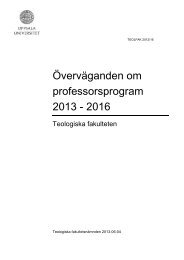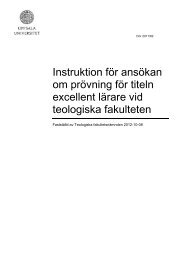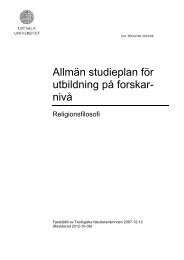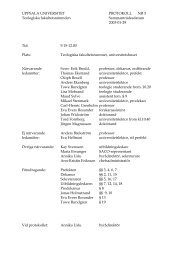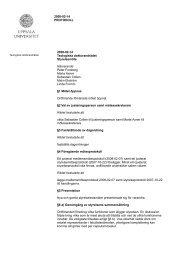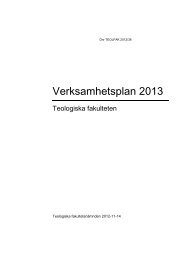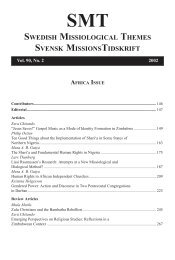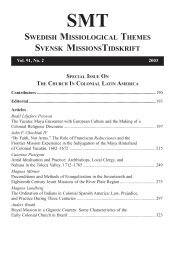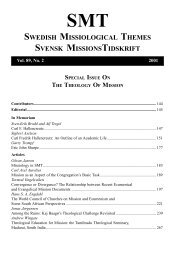SWEDISH MISSIOLOGICAL THEMES SVENSK MISSIONSTIDSKRIFT
SWEDISH MISSIOLOGICAL THEMES SVENSK MISSIONSTIDSKRIFT
SWEDISH MISSIOLOGICAL THEMES SVENSK MISSIONSTIDSKRIFT
Create successful ePaper yourself
Turn your PDF publications into a flip-book with our unique Google optimized e-Paper software.
492 Tormod Engelsviken<br />
following motto: “Prayer and pains, through faith in Jesus Christ, will do<br />
anything”. Tragically, the Indian settlements were destroyed in war and the<br />
Moheecans eradicated so that nobody today is using their Bible translation.<br />
The missionaries of Pietism<br />
It was the movement of Pietism that overcame the denial of the missionary<br />
obligation that was dominant among the leading Lutheran theologians during<br />
the Orthodox period. The most important centre of Pietism in Germany was<br />
the city of Halle where August Hermann Francke was the leader. It was from<br />
here that the first Lutheran missionary movement with lasting effects started.<br />
Since the Germans did not have any colonies and therefore could not send<br />
out their own missionaries on the basis of the principle cuius regio eius religio,<br />
it was the Pietistic Danish king Fredrik IV who sent the two German pastors<br />
from Halle, Bartholomeus Ziegenbalg and Heinrich Plütschau as missionaries<br />
to the Danish colony of Trankebar in South-India. In addition to serve the<br />
Danish colonists they should also do mission work among the Hindu Tamils<br />
who lived in the colony. They departed in 1705.<br />
This Danish-German Trankebar mission became pioneering for Protestant<br />
mission in India and set a pattern for Protestant mission generally, with<br />
emphasis on preaching of the gospel in the vernacular – with sensitivity to<br />
the local culture and religion -, Bible translation, educational work, work<br />
among the poor and sick and the establishment of a local church with its<br />
own clergy. In line with Pietistic spirituality the missionary work also aimed<br />
at a decisive personal conversion experience as requirement for baptism<br />
and incorporation in the church. 25<br />
In the second decade of the eighteenth century the Norwegian pastor Thomas<br />
von Westen (“The Apostle of the Same people”) made several mission<br />
journeys to the Lapps or Same people in Northern Norway, and in 1721<br />
another Norwegian clergyman, Hans Egede (“Greenland’s Apostles”) left<br />
Bergen for Greenland as royal merchant and missionary. These two opened<br />
the Norwegian Protestant mission enterprise which would not gain real<br />
strength, however, until the next century when Pietistic revivals swept the<br />
country and became a strong Christian grassroots movement. Typical of<br />
24 Neill 1973:225-226<br />
25 Neill 1973:228-231



